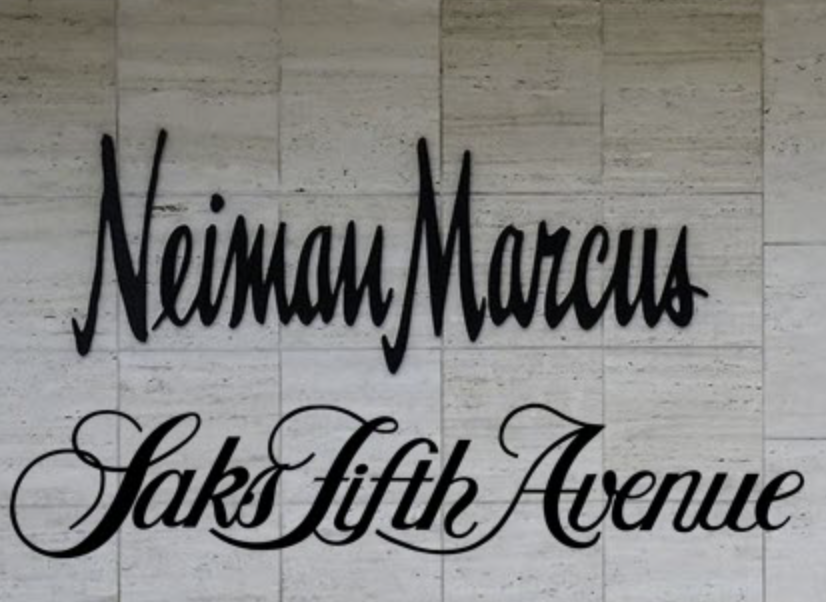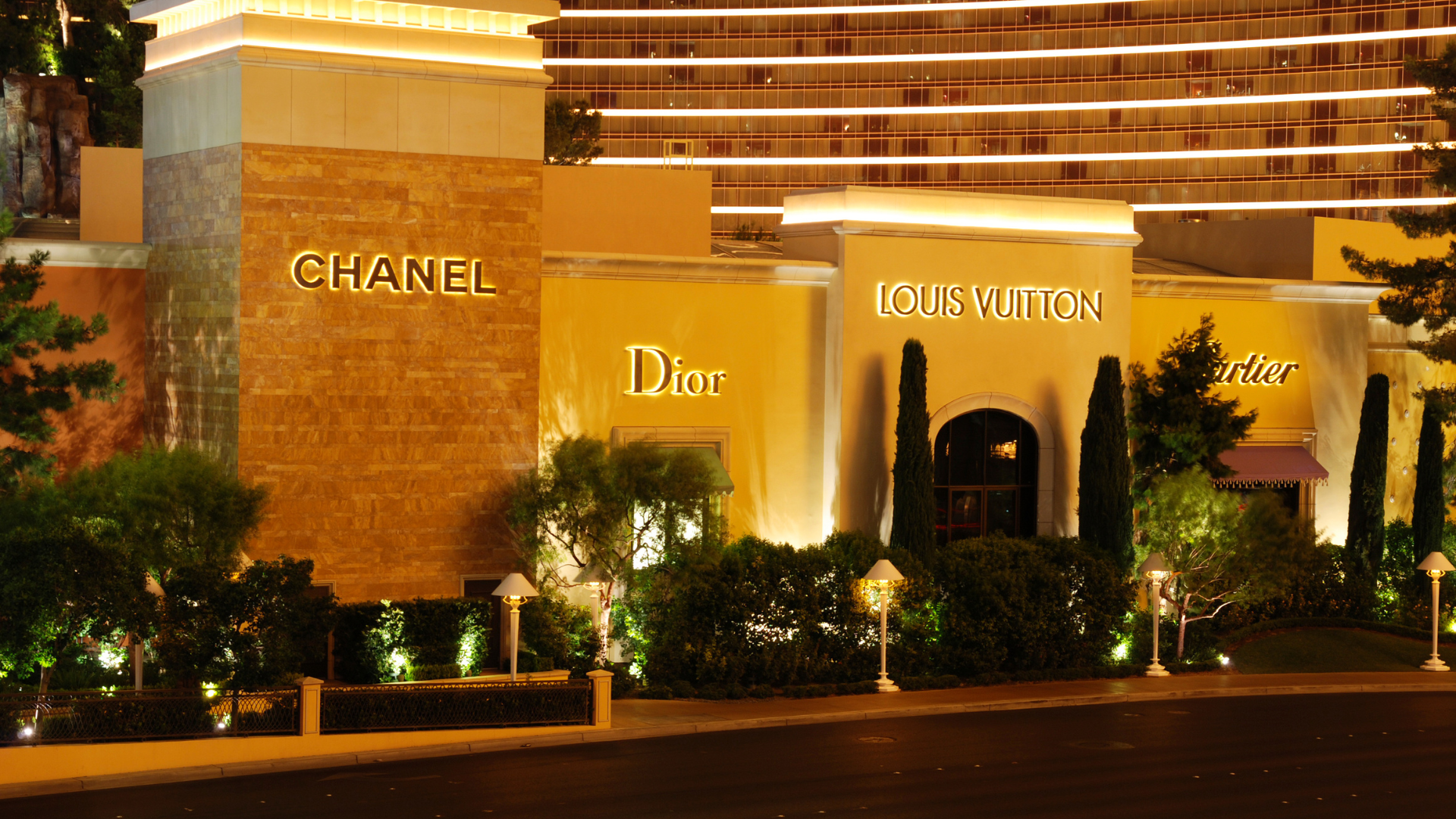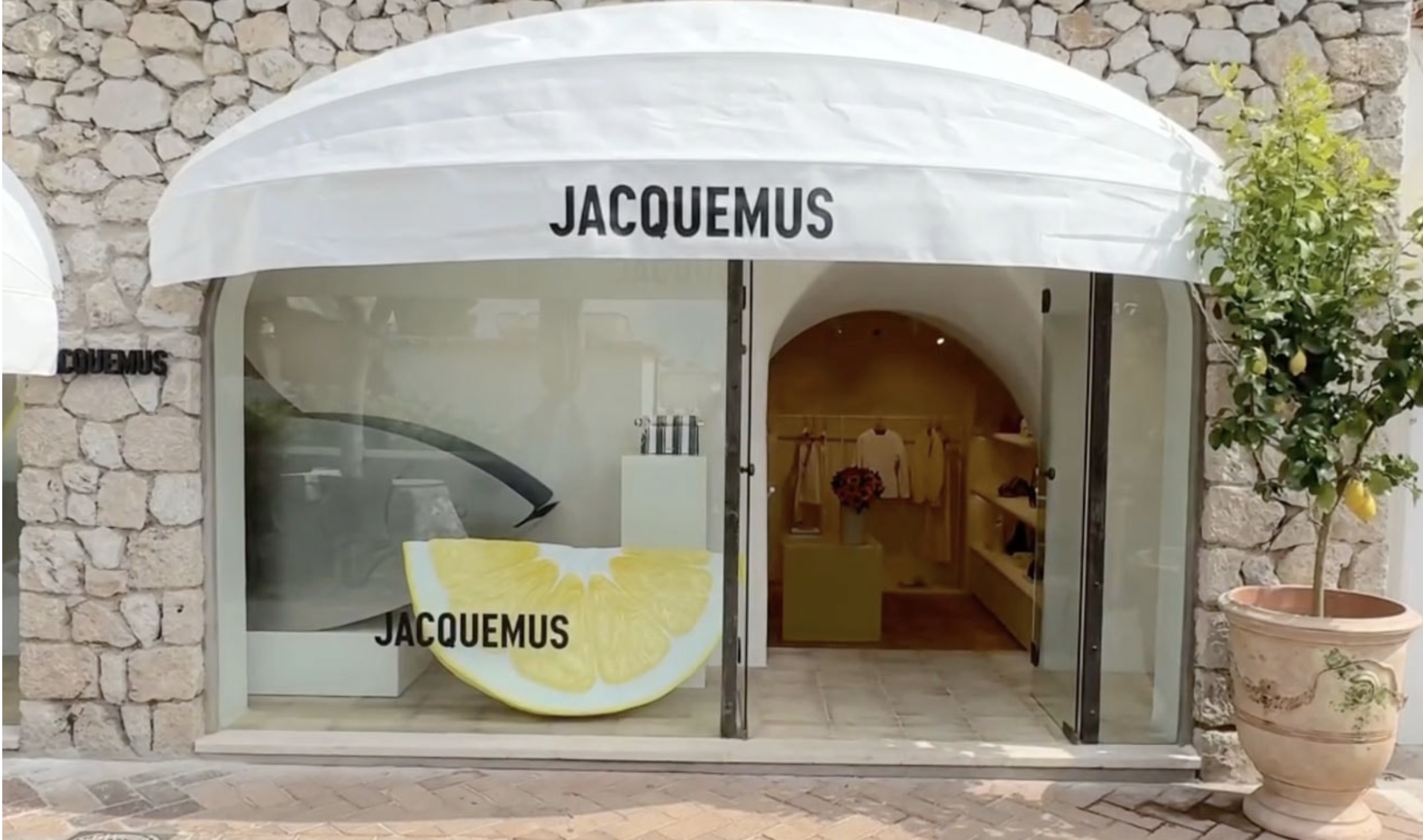
Reflecting on the Brand Management Revolution in Fashion
The rise of brand management firms is reshaping the fashion industry at a fundamental level. While these firms drive efficiency and open new avenues for profitability, there is a pressing need to balance these benefits with the maintenance of creative integrity and diversity. It's essential for the industry to strive for a model that supports both financial success and the flourishing of creative talent.
The expansion of brand management companies offers a modern solution to the economic challenges facing traditional retail, but it's crucial that the industry retains its commitment to innovation and diversity. In this new landscape, the fashion industry must ensure that it does not lose its essence in pursuit of profitability.
#FashionIndustry, #BrandManagement, #IntellectualProperty, #FashionRevolution, #AuthenticBrandsGroup, #WHPGlobal, #MarqueeBrands, #FashionBusiness, #RetailInnovation, #CreativeIntegrity, #FashionTrends, #InvestmentTrends, #FashionFuture

Case Study : Jonathan Anderson's Impact on the Transformation of Loewe into a Cultural Fashion Brand
Jonathan Anderson's tenure at Loewe has been marked by a dynamic infusion of creativity that merges traditional craftsmanship with avant-garde fashion sensibilities. His deep engagement with historical and cultural elements has connected the past to the present, creating collections that resonate deeply within the modern fashion landscape. These collections combine high couture craftsmanship with a raw, almost handmade energy, establishing a unique narrative that sets Loewe apart in the luxury market. Anderson's visionary approach has not only revitalized Loewe’s brand identity but has also positioned the brand at the forefront of cultural relevance. As Loewe continues to evolve, it exemplifies how traditional luxury brands can reinvent themselves while maintaining their heritage in craftsmanship and quality.
#JonathanAnderson, #Loewe, #FashionInnovation, #LuxuryFashion, #CulturalIcon, #Craftsmanship, #AvantGardeFashion, #FashionTransformation

Exploring the Necessity of High-Profile Collaborations for Louis Vuitton
Louis Vuitton's recent announcement of its collaboration with Timberland makes one reevaluate the strategic necessity and impact of high-profile collaborations within the luxury fashion industry. With prices soaring between 2,200 to 2,600 euros for standard models, and an exceptional 75,000 euros for a limited-edition variant, the initiative demands scrutiny. Does Louis Vuitton genuinely benefit from such partnerships, or is this merely a chase for continued relevance and media spotlight?
#LouisVuitton, #Timberland, #LuxuryFashion, #FashionCollaboration, #BrandIdentity, #LuxuryBrands, #ConsumerInsight, #FashionIndustry, #InnovationInFashion, #MarketTrends

Case Study : Elsa Peretti for Tiffany - her design aesthetic & legacy
Tiffany needs no introduction, the quintessential American jeweller with a worldwide reputation for glamour and style. The King of Diamonds - Charles Lewis Tiffany helped define legendary jewelry design as we know it and established the diamond engage
Elsa Peretti Design Aesthetic There is no new design, because good lines and shapes are timeless. Her designs were as individualistic as Elsa herself. Peretti’s designs invite touch. Inspired by found objects, bones, beans, tears, and the like, her designs elicit emotion, and are intended to be lived with and loved, not admired from a distance.
#Tiffany #ElsaPeretti #CaseStudy

Case Study : Decoding Elegance of The Row
Immerse yourself in the artistry of The Row's brand identity, meticulously crafted to epitomize sophistication and timelessness. From the choice of materials to the minimalist aesthetic, every detail contributes to the brand's allure. Discover how The Row has mastered the art of creating an aspirational lifestyle that resonates with its discerning audience. In this case study, we unravel the intricate layers of The Row's brand identity, digital architecture, and its unparalleled command over owned and earned media. We delve into the brand's digital architecture, dissecting its online presence, e-commerce strategy, and how it harnesses technology to connect with its global clientele.
#TheRow #LuxuryFashion #BrandIdentity #DigitalArchitecture #OwnedMedia #EarnedMedia #FashionCaseStudy #FashionBranding

Case Study: Bvlgari's Transformation into a Global Luxury Lifestyle Brand
Bvlgari, an iconic Italian luxury brand founded in 1884 by Sotirios Voulgaris in Rome, has evolved from a fine jewelry shop to a global luxury lifestyle powerhouse. Known for its bold, innovative designs and the use of colorful gemstones, Bvlgari has expanded its product line to include watches, fragrances, accessories, and luxury hotels, consistently embodying the essence of Roman style and elegance. Acquired by LVMH in 2011, Bvlgari has leveraged this partnership to expand its global footprint and diversify its offerings, further cementing its status as a leader in the global luxury market.
#Bvlgari, #LuxuryBrand, #ItalianJewelry, #LVMH, #LuxuryLifestyle, #Innovation, #HeritageBrand, #LuxuryHotels, #FashionJewelry, #BvlgariHistory

Case Study: Cartier's Journey to Timeless Elegance and Innovation in Luxury
Cartier, established in 1847, epitomizes luxury with its exceptional craftsmanship and rich heritage. Historically celebrated for its innovative jewelry and watch designs, the brand has successfully expanded globally, maintaining a prestigious reputation among royalty and celebrities. Recent years have seen Cartier excel in digital transformation and sustainability, significantly increasing its brand value in 2022 through strategic renovations, enhanced e-commerce capabilities, and innovative customer engagement. By continuously adapting and upholding its tradition of excellence, Cartier remains a symbol of timeless elegance in the luxury market.
#Cartier, #LuxuryJewelry, #Watchmaking, #SustainableLuxury, #DigitalTransformation, #LuxuryBrands, #HeritageBrands, #HighJewelry, #BrandValue, #Innovation in Luxury

Saks Fifth Avenue and Neiman Marcus Merger : Analyzing the Long-Term Impact of the Luxury Retail Merger
After extensive negotiations, Hudson’s Bay Co. has successfully finalized a deal to acquire Neiman Marcus Group for approximately $2.65 billion, merging it with Saks Fifth Avenue. This merger is expected to streamline operations, achieve significant cost savings, and bolster the combined entity’s online presence in the competitive luxury retail market. However, it raises concerns about reduced competition and potential job losses due to store consolidations. The strategic move aims to better position the new entity to navigate the evolving consumer preferences and market dynamics.
#LuxuryRetail, #SaksFifthAvenue, #NeimanMarcus, #RetailMerger, #FashionIndustry, #ECommerce, #RetailNews, #BusinessStrategy, #MarketTrends, #RetailInnovation

Harnessing the Power of Strategic Segmentation in the Luxury Market
In the luxury market, strategic customer segmentation is key, particularly in targeting Very Important Clients (VICs). These clients, though small in number, significantly influence market dynamics by driving a disproportionate amount of revenue. Luxury brands are increasingly focusing on offering high-quality, personalized experiences and impeccable service to cater to this demanding segment. Investments in flagship stores and prime real estate, along with enhanced service through skilled client advisors, are pivotal strategies to engage these high-value customers.
#LuxuryMarket, #CustomerSegmentation, #HighValueClients, #LuxuryBrands, #MarketStrategy, #LuxuryRetail, #ClientEngagement

Navigating Turbulence in the Beauty Industry: A 2024 Mid-Year Review
In 2024, the beauty industry faces a challenging landscape, marked by L'Oréal's revised growth forecasts due to market volatility in China and a general slowdown in the beauty market. Despite these setbacks, skincare emerges as a resilient segment, with new players exploring mergers and acquisitions, contrasting with the struggling makeup sector where brands like Glossier and Kosas Cosmetics find transactions challenging. This dichotomy highlights the need for beauty companies to adapt strategies amidst evolving consumer preferences and market dynamics, suggesting that those focusing on innovation and consumer engagement are best positioned to navigate these turbulent times.
#BeautyIndustry, #Loreal, #MarketTrends, #Skincare, #Makeup, #MergersAndAcquisitions, #ConsumerTrends, #2024Outlook, #InvestmentOpportunities, #EconomicChallenges

Chanel, Hermès, and LVMH Pivot to Hard Luxury with Strategic Emphasis on Watches
In a strategic shift, luxury brands Chanel, Hermès, and LVMH are intensifying their focus on watchmaking, underscored by joining the board of the Watches and Wonders Foundation Geneva. This move from soft to hard luxury, which includes more durable luxury watches, signifies their adaptation to a more stable market segment amid economic uncertainties. Their commitment is further emphasized by their active participation in the Watches and Wonders events, which have grown to include public days and expansion to global cities like Shanghai. The Geneva event from next April 1 to 7 will further showcase these brands' innovations and collaborations, marking an evolution within the luxury watch industry.
#LuxuryWatches, #ChanelWatches, #HermesWatches, #LVMHWatches, #WatchesAndWonders2024, #GenevaWatchEvent, #LuxuryTrends, #HardLuxury, #Watchmaking, #InnovationInLuxury

LVMH Targets Growth in Hospitality with Acquisition of Chez L'Ami Louis
LVMH Moët Hennessy Louis Vuitton has strategically expanded its hospitality division by acquiring the iconic Paris bistrot, Chez L’Ami Louis. This move underscores the company's focus on enhancing its portfolio in the luxury hospitality market. LVMH has been actively broadening its reach in the hospitality sector, evidenced by its previous acquisition of Belmond Ltd. for $2.6 billion. This acquisition added prestigious properties like the Venice Simplon-Orient-Express and the Hotel Cipriani in Venice to its portfolio. The addition of Chez L’Ami Louis is seen as a continuation of this strategy, designed to enrich LVMH's luxury travel and dining experiences.
#LVMH, #LuxuryHospitality, #ChezLAmiLouis, #ParisBistrot, #LuxuryTravel, #LuxuryDining, #HospitalityIndustry, #LuxuryLifestyle, #StrategicAcquisition, #LuxuryMarket Trends

Luxury Industry : Trends and Projections Amidst Economic Challenges
In 2023, the luxury goods market demonstrated resilience and growth, fueled by strong consumer confidence in Europe and a post-COVID recovery in China, achieving potential growth between 5 to 12 percent. However, as 2024 progresses, the outlook becomes more cautious with growth projections not exceeding 4 percent, impacted by reduced consumer confidence and economic pressures leading to a preference for discreet luxury. The industry's adaptability to changing market conditions and consumer preferences, particularly in pricing strategies and the enhancement of consumer experiences, remains critical for sustaining growth.
#LuxuryGoodsMarket, #EconomicChallenges, #ConsumerConfidence, #MarketTrends2024, #LuxuryRetail, #DiscreetLuxury, #SustainableGrowth

Chanel Unveils Sport-Inspired High Jewelry Collection
Chanel has introduced its "Haute Joaillerie Sport" collection, showcasing a sporty aesthetic in high jewelry. Led by Patrice Leguéreau, the collection reflects the brand’s longstanding connection to sportswear and movement, a theme that traces back to Gabrielle Chanel’s innovations in the 1920s.
Amidst a global economic slowdown impacting the luxury sector, premier brands like Louis Vuitton, Chanel, Gucci, Bulgari, and Cartier are strategically bolstering their high jewelry offerings. These collections, known for their exceptional craftsmanship and historical richness, cater to an elite clientele whose purchasing power is less affected by market fluctuations. By focusing on high jewelry, these brands aim to safeguard their market positions by appealing to luxury consumers seeking uniqueness and exclusivity. This strategic emphasis helps them maintain desirability and drive sales even when the broader luxury market faces challenges.
#ChanelHighJewelry, #SportyLuxury, #InnovativeDesigns, #HighJewelry, #MonacoUnveiling, #CreativeFreedom, #LuxuryCollectibles, #ChanelHeritage, #FashionAndSport, #JewelryInnovation

Jacquemus' 15th Anniversary Show in Capri: A Glimpse into the Brand's Future Direction
Simon Porte Jacquemus celebrated the 15th anniversary of his brand with a distinctive fashion show at Casa Malaparte in Capri, blending cinematic aesthetics with upscale craftsmanship. The event showcased a collection characterized by vibrant colors, structured textures, and fluid draping, featuring standout pieces like a canary yellow coat and a sleek black dress. The show's intimate setting and reference to style icons such as Jackie Kennedy and Gwyneth Paltrow highlighted Jacquemus' commitment to simplicity and luxury, appealing to a mature audience while preserving the brand's authenticity.
#Jacquemus, #FashionShow, #Capri, #LuxuryFashion, #AnniversaryCollection, #CasaMalaparte, #StyleIcons, #BrigitteBardot, #GwynethPaltrow, #Menswear, #WomensFashion, #DesignerWear

Watch Industry Round-Up: Pioneering Designs and Innovations of 2024
n the first half of 2024, the watch industry has witnessed significant innovations with Vacheron Constantin breaking its own record by introducing the world's most complicated watch, the Berkley Grand Complication, featuring 63 complications including a pioneering Chinese perpetual calendar. Bulgari reclaimed its title for the world’s thinnest watch with the Octo Finissimo Ultra Mark II, measuring an astounding 1.7 millimeters in thickness. Additionally, Vacheron Constantin introduced a novel concept with the Égérie — The Pleats of Time, a watch that incorporates a perfume-infused strap, blending haute horlogerie with the art of perfumery.
#WatchIndustry, #VacheronConstantin, #Bulgari, #LuxuryWatches, #Horology, #Innovation, #PerfumedWatch, #UltraThinWatches, #MechanicalWatch, #WatchmakingArt, #LuxuryTimepieces

Strategic Focus on High Jewelry by Luxury Brands
Luxury brands like Bulgari, Gucci, and Cartier are strategically emphasizing high jewelry collections to navigate potential economic downturns, reinforcing brand prestige and leveraging heritage. By employing anniversary celebrations, culturally rich themes, and narrative-rich designs, these brands aim to attract affluent consumers and enhance perceived value, serving as a buffer against market volatility. This strategic focus not only maintains consumer interest but also positions high jewelry as a vital part of their financial stability and branding strategy.
#LuxuryBrands, #HighJewelry, #MarketStrategy, #EconomicDownturn, #BrandPrestige, #ConsumerEngagement, #InvestmentValue

Mytheresa and Vestiaire Collective Broaden Resale Service to All Customers
Mytheresa and Vestiaire Collective have expanded their luxury resale service to all Mytheresa customers, enabling them to sell pre-loved items for instant store credit, regardless of where the items were originally purchased. This strategic move aims to cater to the increasing demand for sustainable luxury shopping and strengthens their position in the rapidly growing global resale market, estimated to be worth $200 billion.
#Mytheresa, #VestiaireCollective, #LuxuryResale, #SustainableFashion, #CircularFashion, #LuxuryShopping, #FashionTrends, #EcoFriendlyFashion

Case Study: Hodinkee's Turbulent Journey Through Expansion and Market Downturns
Hodinkee’s story vividly illustrates the complexities and risks associated with mergers and acquisitions, especially for small to medium-sized enterprises attempting to scale in volatile markets. The acquisition of Crown & Caliber was initially seen as a strategic move to solidify Hodinkee’s presence in the luxury watch market. However, the subsequent market downturn and integration challenges magnified the inherent risks of M&A. These included cultural mismatches, system integration issues, and the strategic misalignment that ultimately strained the company’s resources and diluted its brand value.
This case study underscores the critical importance of understanding market dynamics and the need for robust, adaptable integration strategies when pursuing mergers and acquisitions. Companies must not only align their operational and cultural practices but also remain agile enough to respond to sudden market changes. As Hodinkee navigates through these challenges, its experiences serve as a cautionary tale for other companies about the perils of expansion without sufficient emphasis on comprehensive due diligence and the flexibility to adjust to new market realities. The lessons learned from Hodinkee highlight the delicate balance between growth aspirations and the practical challenges of merging distinct business entities in fluctuating economic conditions.
#MergersAndAcquisitions, #BusinessStrategy, #LuxuryMarket, #WatchIndustry, #MarketDownturn, #CorporateCulture, #BusinessIntegration, #Hodinkee, #CaseStudy, #MarketVolatility

Embracing Amazon: The Evolving Relationship Between Fashion, Beauty Brands and the E-commerce Giant
Fashion and beauty brands are increasingly adopting Amazon as a vital sales channel, recognizing its enormous reach and potential for tapping into new customer bases. Initially hesitant, premium brands like Coach and Clinique have started experimenting with Amazon, encouraged by the platform's extensive daily traffic and advanced technological features like AI and AR for an enhanced shopping experience. While challenges remain, particularly for luxury brands seeking to maintain exclusivity and brand integrity, the benefits of Amazon's massive scale and logistical advantages are enticing more companies to explore this avenue.
#FashionRetail, #BeautyBrands, #Amazon, #EcommerceStrategy, #LuxuryFashion, #DigitalTransformation, #RetailInnovation